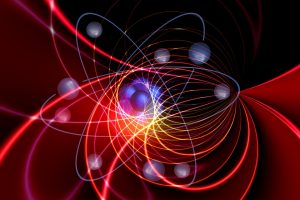
Chinese scientists have transmitted the quantum version of computer memory between two entangled clouds of atoms over 50 kilometers, according to the Australian Broadcasting Corporation.
The feat, which was achieved using standard fibre optic cables, smashes a quantum entanglement record. Prior to this, the record for quantum memory experiments was 1.3-kilometer.
Entanglement, a cornerstone of quantum physics, is the ability to manipulate the spin, position and momentum of two — or more — entities separated by distance underlies future technologies such as secure communication systems.
The scientists say the experiment, published today in the journal Nature, is a step towards building a quantum internet.

The main significance of this paper lies in extending the entangling distance in [optical] fibre between quantum memories to the city scale,” said Jian-Wei Pan, of the University of Science and Technology of China (USTC),
The team’s work is an “absolutely formidable achievement,” commented Ben Buchler, a physicist at the Australian National University.
A Series of Quantum Records
It’s not the first time Professor Jian-Wei’s group has created a quantum record.
In 2017, they sent entangled photons between Earth and satellites — a distance of up to 1,200 kilometers.
While the latest experiments don’t match the distance achieved by satellite, the two technologies serve different purposes, Professor Jian-Wei said.
“The satellite-based method suits better for the scenario of large-scale applications in which fibre connection is not allowed,” he said.
But the atom-photon entanglement system could overcome the quantum repeater problem in ground-based fibre systems to reduce loss over distances.
The idea is that instead of trying to transmit information over very long distances, the information is sent via a network of photon-atom entanglement systems linked to each other.
“If we [detect the photons], the connection between each segment will be very efficient, if storage time of the memories is sufficiently long,” Xiao-Hui said.
Although satellite was “definitely winning” the distance records, Buchler said quantum repeaters could distribute memory in a controlled way and enable synchronized networks.
“If you’ve just got photons flying around its very hard to delay them so that they arrive at the right place at the right time,” Buchler said. “But if you have a system that you can control where you push a button to get the photons out on demand that’s the advantage of these memory systems.”
While the achievement does not mean that people will be tapping into a quantum internet anytime soon, it is another significant step into the quantum era.
















